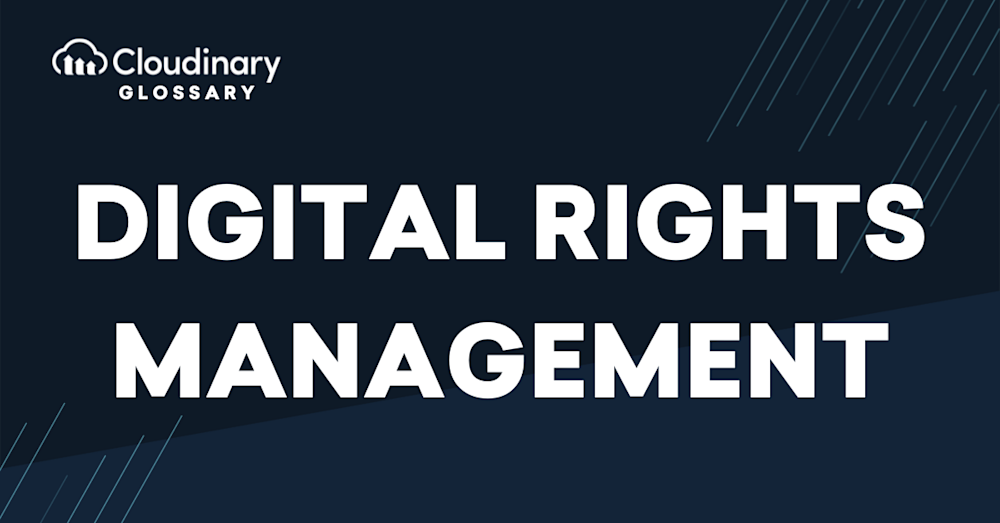What is Digital Rights Management?
Digital Rights Management (DRM) is a set of technologies and protocols designed to protect and manage the rights of digital content. It encompasses various techniques to control access, restrict copying and distribution, and enforce usage policies for digital assets such as music, videos, e-books, and software. DRM ensures that content creators and distributors can control their intellectual property rights and prevent unauthorized use or distribution.
How Digital Rights Management Works
DRM employs encryption techniques to protect digital content and control its access and use. It relies on encryption algorithms and secure communication channels to prevent unauthorized copying, sharing, and tampering. DRM systems often involve using digital licenses or access keys that govern the rights and permissions associated with the content, in line with provisions set out by the Digital Millennium Copyright Act (DMCA).
When a user wants to access or consume protected content, they must authenticate their identity and obtain the necessary access rights or licenses. The DRM system verifies the user’s credentials and determines whether they have the necessary permissions to access and use the content. If authorized, the content is decrypted and made available to the user through secure channels or specialized DRM-enabled applications.
Common Use Cases for Digital Rights Management
Whether music, video, electronic books, or software, the creation and distribution of digital content has become commonplace. But as digital content finds its way across platforms and devices, how does one ensure it remains secure, authorized, and optimized? Understanding the wide-ranging applications of DRM across industries can widen your perspective and provide insights for your media optimization strategies.
1. Protecting Intellectual Property
DRM is fundamentally used to prevent unauthorized redistribution of digital media. This safeguards content creators’ and owners’ intellectual property rights, providing them control over who can access, view, copy, or modify their work.
For instance, think of an e-book available on an online store for purchase. By implementing DRM, the author ensures that only the purchaser can access the content, thereby discouraging piracy.
2. Maintaining Creative Control
For artists and creatives, DRM provides control over the creative expression of their work. It ensures that the integrity of the content is preserved, and their work cannot be manipulated without their permission.
Consider a photographer showcasing high-resolution images on their website. With DRM, they can restrict users from downloading and editing these photos without prior approval.
3. Enabling Customized User Experiences
With the rise of on-demand content like Netflix, Hulu, and Amazon Prime Video, separating authorized users based on geographical location or viewer preferences has become paramount. DRM assists in streaming tailored content by checking the user’s location or viewing history and delivering personalized content accordingly.
4. Facilitating Monetization Models
DRM allows the creation of different customer tiers in SaaS models or streaming services. Based on the level of access a customer has purchased, DRM controls what content, features, or services are accessible to them.
For example, a music streaming service can implement DRM to differentiate between free users and premium subscribers, providing differential access to ad-free listening, offline downloads, or high-quality streaming.
5. Syncing Enterprise Content Management
In a professional setting, DRM supports secure syncing of enterprise content, ensuring that sensitive corporate materials or sensitive documents shared by an organization can only be accessed and edited by authorized personnel. Healthcare organizations and financial services companies rely on DRM to comply with data protection regulations like HIPAA and GLBA.
Advantages and Disadvantages of DRM
The digital transformation has led to an exponential increase in the creation and distribution of digital content. This shift has highlighted the importance of Digital Rights Management systems in protecting and authorizing access to this digital media. However, like any technology, DRM comes packed with benefits and challenges that could affect how you utilize them to optimize your media and image transformations.
Advantages of DRM
- Protection of Intellectual Property – One of the primary benefits of DRM is that it protects the intellectual property rights of content creators and owners. This level of security is especially vital in a world where digital content can be easily duplicated and distributed.
- Revenue Assurance – By controlling content access to and distribution, DRM helps secure the revenue streams for content creators and sellers. This advantage is particularly crucial for providers offering subscription-based services.
- Control over User Experience – DRM enables content providers to control the user experience. The use of DRM can shape the way content is consumed by end-users, molding an experience that aligns with the brand’s vision.
- Enterprise Security – DRM provides robust security measures for sensitive company documents and proprietary information, allowing businesses to maintain control and security over their digital assets.
Disadvantages of DRM
- User Accessibility Issues – DRM can sometimes create obstacles for legitimate users. Restrictions on the number of devices or geographical access could potentially hamper the user experience.
- Compatibility Issues – Not all DRM systems are compatible with all devices or platforms, leading to difficulties accessing the content cross-platform.
- Potential for Decreased Quality – Some DRM systems can degrade the quality of the media in their bid to protect it— this could lead to a subpar user experience.
- Potential Consumer Backlash – Heavy restrictions imposed by DRM can frustrate consumers, fan the flames of negative PR, and lead to loss of consumer trust.
Secure Your Digital Assets with DRM
DRM is crucial in protecting and managing digital content, preventing unauthorized distribution, and ensuring fair compensation for content creators and distributors. Despite its limitations, DRM offers significant advantages for organizations looking to safeguard their intellectual property and control access to their digital assets.
Organizations can leverage Cloudinary’s DRM capabilities to implement an effective DRM strategy, providing robust security, granular access control, and seamless content delivery. By leveraging Cloudinary, you can gain control over your digital assets while creating an optimal user experience.
Don’t wait to level up your DRM game. Sign up for free today and discover how to manage and secure your digital media assets effectively.
Additional Resources You May Find Useful:





